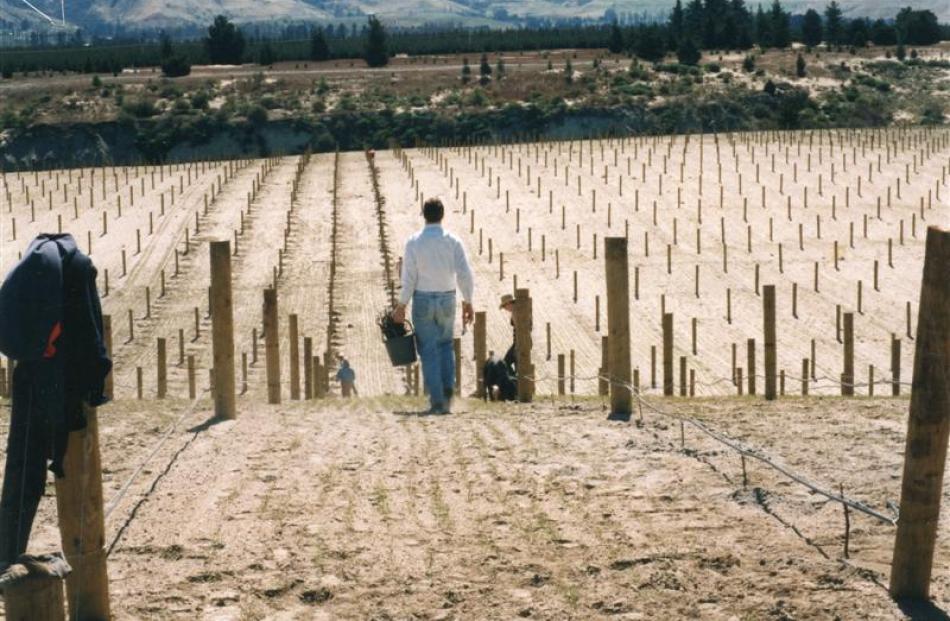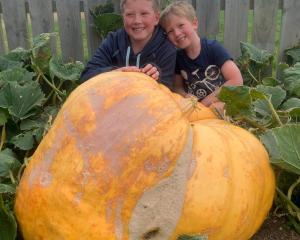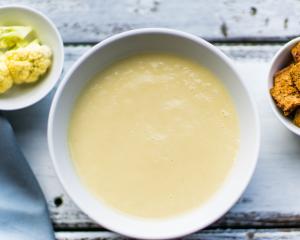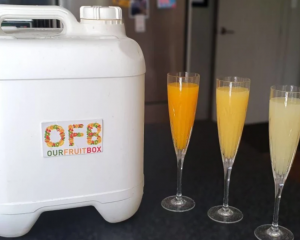A lot has changed in food and wine in 25 years. As she prepares to retire from the Otago Daily Times, Charmian Smith takes a nostalgic look back over a career writing about two of her favourite subjects.
Although many people get nostalgic over their mother or grandmother's baking or roast dinners or their grandfather's vegetable garden, few of us would really want to go back to the days when coffee was instant, cheese was a bigger block of cheddar, pasta was spaghetti or macaroni, olive oil was hard to find and only a few people had heard of pesto.
Now we expect to find a decent espresso or flat white everywhere.
We've developed a cafe culture, search out artisan coffee roasters and tea blenders and even down in here in the South we are developing an interest in specialty coffees.
Writing about food and wine over the past 25 years, I've seen fads come and go: cream sauces on everything in the '80s, deep-fried camembert in the '90s and the fashion for fusion food, which hauled together elements of different cuisines, sometimes outrageous, sometimes inspired.
Its legacy is that chefs now are not afraid to use whatever flavour or ingredient they feel will suit a dish, but by and large they still tend to respect the flavours that belong with different cuisines.
Restaurant food used to be stacked in teetering towers that had to be dismantled before you could eat them, but now food tends to be dotted about the plate decorated with blobs or smears of sauce, salad seedlings, powdered flavourings masquerading as ''soil'' or ''dust'' sprinkled around, or topped by foams, spheres and other molecular fads.
Wine lists used to be dire, with nothing by the glass except a boring house wine.
Now restaurateurs realise their guests enjoy matching wine with food and offer a limited (sometimes too limited) selection by the glass, and if you are lucky, sometimes even matched with the dishes.
A restaurant with a good wine list is a great place to explore unfamiliar wines by the glass.
You can still get almost anything any time of year - asparagus from the US in autumn, flavourless tomatoes and stonefruit in the middle of winter, parsnips in summer, pears in spring, but one of the biggest recent trends is a new awareness of seasonality and locality.
It's part of the growing awareness of where our food comes from and how it is produced.
It started as we were worrying about multinationals taking over our food supply and the insidious creep of genetically modified food.
The rise and rise of farmers markets around the country over the past decade or so has contributed enormously to this awareness, as well as to the establishment of artisan producers.
Many of us have a few vegetables and herbs in the garden these days, perhaps hoping to show children or grandchildren where real food comes from, as well as appreciating the flavour difference of vegetables that have just been harvested.
It's part of the growing awareness of environmental and ethical food production and eating.
Many of us look for organic, sustainable or free range products and eschew things like caged chickens, eggs and pork.
We are also eating less meat and dairy, for environmental or humanitarian reasons.
Flexitarian eating, which includes some meat-free meals each week, is a current trend and a good one: healthy, flavoursome and environmentally friendly.
Vegetarians are becoming more or less mainstream and even vegans, who eat no animal products at all, are no longer regarded as entirely weird.
Back in the '90s Mediterranean cuisine was emerging and is still with us, though in those days you had to search for good olive oil, polenta, artichokes and olives.
Now you can find many local, rich, peppery oils for drizzling or dunking your sourdough in.
There's another development: the welcome rise of the artisan baker and good crusty bread with texture.
Cooking from scratch is something foodies like to say they do, but the pressure of time inevitably leads most of us to convenience foods, whether it's roasted capsicums out of a jar, cooked chickpeas out of a tin, a prewashed salad or an artisan chutney or sauce, not to mention, of course, the myriad
prepared and ready-to-eat foods, from marinated chicken pieces to heat'n'eat meals lining supermarket shelves.
However, perhaps on a weekend, we may indulge in making something special from one of the lavishly illustrated cookbooks decorating the coffee table.
It's been interesting to follow the coming and going of health fads - low fat was the big thing 20 years ago.
Then we were told that some fats, like mono- and polyunsaturated fats, especially omega 3, were healthy.
Next we discovered that low-fat products often had lots of sugar, which is the current demon in the health and anti-obesity crusade.
Along the way there have been various other fads, some developing from real problems, like gluten-free diets for coeliacs or foods with low glycemic indexes, into popular movements of questionable validity such as paleo or low-carb diets.
The one thing that hasn't changed much, although it's often underplayed as there's no industry push behind it, is Michael Polan's oft-quoted, simple but sound advice: ''Eat food, not too much, mostly plants''.
It's a timeless but well-founded exhortation to eat more vegetables, fruits, pulses and whole grains, less meat and to avoid processed foods.
We've seen the growing popularity of cooking classes.
These combine entertainment, education and socialising with good food and often wine.
Many regions now have wine and food trails enabling us to visit wineries, restaurants and/or artisan producers to discover and enjoy local produce.
The media has changed, too.
We've seen the rise of celebrity chefs and many people spend more time being entertained by them on television than time cooking or enjoying food with family and friends.
Now anyone can write about food and post recipes on the internet.
It may often be a case of reader beware, but there are also some excellent, informative blogs that go viral and even spawn books.
Likewise, anyone can be a restaurant critic and we've seen the rise of ''my wife's chicken was very tasty'' school of food writing, but there are also many informed commentators.
Like everything on the internet, you have to be aware of who or what is behind it.
• In the 25 years since I wrote my first wine column, the wine industry has burgeoned.
Some varieties such as muller thurgau (aka riesling sylvaner) have virtually disappeared; others, such as pinot noir and pinot gris, have become mainstream and many more are emerging: viognier, grüner veltliner, arneis, albarino, tempranillo and sangiovese among them, and there are new trends from overseas emerging here for ''orange wine'' (white wine made like a red) and ''natural wine'' made without the addition of anything, even the preservative sulphur dioxide.
The best can be stunning, the worst dire.
If you travel round Marlborough now, you'd scarcely believe that 30 years ago there was hardly anything there.
There are almost 23,000ha of vineyards in the region now, but when I first explored the area in the mid-1980s there were four wineries to visit - Montana, Hunter's, Te Whare Ra and Daniel Le Brun, though everyone was talking about the big new one being built by an Australian that was to be called Cloudy Bay.
Hunter's Marlborough sauvignon blanc had just won its first awards in the UK and was starting to be noticed overseas.
Now Marlborough sauvignon blanc is world famous and winemakers are exploring the characteristics of single vineyards and interesting winemaking methods such as barrel fermentation with indigenous yeast.
On my first visit to Central Otago vineyards in 1988, the year before I started writing about wine in the ODT and other publications, there were seven producers, five of which still exist: Gibbston Valley, Rippon, Black Ridge, Chard Farm and William Hill (now Shaky Bridge).
Only Rippon, which celebrated 30 vintages last year, and Chard Farm, which is celebrating its 25th anniversary later this month , are still under the same ownership.
Lake Dunstan didn't exist and the vineyards in the Cromwell basin, now the hub of the wine region, were barely a twinkle in someone's eye.
Now New Zealand pinot noir is world famous but it was little known in the 1980s. Some was made in West Auckland where many of the wineries were based at the time, and some went into sparkling wine.
However, when Danny Schuster's 1982 St Helena pinot noir made from Canterbury grapes won a gold medal at the wine awards (now Air New Zealand Wine Awards), people started to take notice of the variety.
At the time New Zealand red wine tended to be stalky green cabernet sauvignon.
It's no wonder we preferred the riper, sweeter reds from Australia and also from South Africa, before sanctions prevented it being imported.
Traipsing round vineyards and talking to winemakers, I've noticed the stories they tell have changed over the years.
Few talk about making fruit-driven wines any longer. Now there's more of a focus, among the finest producers anyway, on diversity and complexity, a result of greater awareness of soils, exposure, and mesoclimate (the terroir), a greater attention to viticulture, and a greater understanding of winemaking processes.
Even the slogan that wine is made in the vineyard (which it obviously isn't) is not heard as often as it used to be.
People have come to realise that what happens in both vineyard and winery are important, and even those winemakers who talk about ''minimal intervention'' in their winemaking have to make decisions such as when to pick, how to press, whether to add yeast or not, how long to ferment, at what temperature and in what vessel - stainless tanks, barrels old or new, or big wooden foudres - whether to leave the wine on its lees or rack it off, when and how to bottle it.
An exciting development (for wine enthusiasts anyway) is the move to exploring the characteristics of individual vineyards or blocks.
The wines are not necessarily better or worse than the same producer's regular wine, but they will have subtle differences that reflect the soils, clones or exposures.
• Wine writing has changed too.
My first trip as a wine writer was to Hawkes Bay in 1989.
I was the only woman and most of the others seemed very old.
I clearly remember one crusty elderly Auckland wine writer telling me categorically they couldn't ripen grapes in Central Otago.
He'd probably said the same about Marlborough in the early 1970s!Now on wine trips there are usually overseas writers and sommeliers, often from China and other Asian countries, Australia, the US, the UK and other parts of Europe as well as a plethora of young, highly qualified local wine writers, many of them women.
A professional association, Wine Writers of New Zealand, has been formed aiming to address the sticky issues of integrity, independence and conflict of interest, something concerning wine writers in the US, the UK and Australia also.
Is the writer promoting wine for the producer or giving readers independent and informed comment?
This depends on who pays the writer, but it is seldom clear.
Traditionally the publication pays its writers, allowing them to be independent of wineries and to write for the readers.
However, some wine writers, especially those whose writing is mainly on their websites, charge wineries for the wine reviews they post, although it's not always clear to readers, who may think they are independent reviews.
Unsurprisingly, such writers usually score the wines they write about highly and some provide gold stickers for bottles.
It is difficult for freelance wine writers to make a living from writing alone and many teach, consult and have other relationships with producers, distributors, retailers or restaurants.
None of us is entirely independent as we all are invited to visit wine regions and wineries, to lunches and dinners, and are sent samples: I for one couldn't afford to buy all the wines I review in my weekly column, although this is clear in its introduction and I taste the wines blind: that is, without knowing what the label is.
However, although there is expectation from such visits or samples, there is no obligation.
And now with smart phones and social media anyone can check what has been said about a bottle on a supermarket or wineshop shelf, tell friends what they are drinking or post their own opinions.
Wine tasting is different from wine drinking.
While particular wines may score highly for their complexity and structure, they will not be to everyone's taste and it's often the more modest, medium-scoring wines that are most enjoyable to drink with friends.
However, wine is always interesting, both a pleasure to drink and share, and an intellectual interest for those who want to explore its intriguing intricacies, and that's what I've always enjoyed about it.
• Charmian Smith is retiring from full-time work at the Otago Daily Times, but will continue writing about wine and food.












